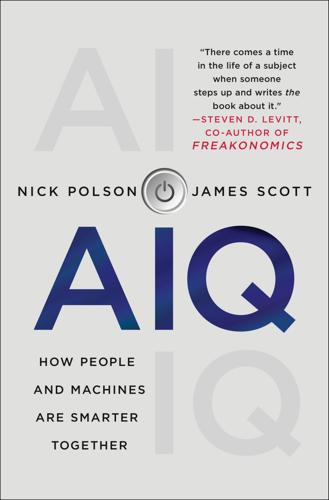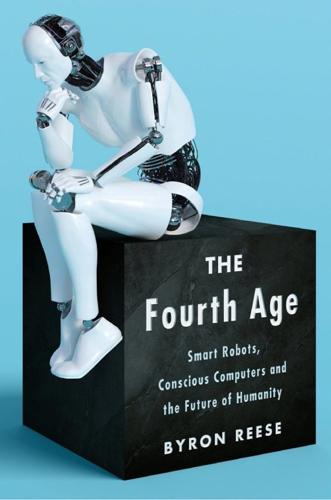Moravec's paradox
description: the observation that tasks humans find simple are often the most challenging for AI
3 results

In Our Own Image: Savior or Destroyer? The History and Future of Artificial Intelligence
by
George Zarkadakis
Published 7 Mar 2016
Computers may be becoming increasingly more powerful in terms of calculations per second,29 and able to perform tasks demanding increasingly intricate levels of knowledge, but they are still a long way from doing what a human baby can do without even thinking. When was the last time you saw a computer giggle at a funny face? The Moravec paradox The inability of computers to perform basic human functions has been succinctly defined by AI researcher Hans Moravec as a paradox. He writes: ‘… it is comparatively easy to make computers exhibit adult level performance on intelligence test or playing checkers, and difficult or impossible to give them the skills of a one-year-old when it comes to perception and mobility’.30 Although computational methods can reproduce high-level reasoning – as demonstrated in the case of expert systems – research in robotics has shown that sensorimotor skills remain a huge challenge.
…
We saw how the discovery that symbols can be used to construct logical operations led to the development of computer languages, and those languages were then used to represent knowledge about the world. Knowledge about the real world is sine qua non for furnishing computers with intelligence. Alas, the Moravec paradox illustrates the failure of this approach. The best that the most common home robot can hope to achieve today, after decades of robotics research, is to clean your floor – as long as you do not ask it to climb the stairs. This means that there are many types of knowledge that cannot be adequately represented with symbolic logic.
…
And that is because when something is unquantifiable it cannot be operated upon in any mathematical or logical way. Our moral decisions are therefore not logical. A purely logical being would have an issue understanding another being motivated by moral values – a fact amusingly illustrated by the comic dialogue Mr Spock and Dr McCoy often have in the original Star Trek series. The Moravec paradox, creativity and hard choices demonstrate that the most essential aspects of being human remain beyond logical representation. This should give pause to anyone claiming that computers based on current technology will surpass human intelligence by 2030, or indeed ever. The American philosopher Hubert Dreyfus, one of the harshest critics of AI, claims that human intelligence mostly depends on unconscious instincts rather than conscious symbolic manipulation, and therefore cannot be captured in formal rules.35 Modern neuroscience has vindicated Dreyfus.

AIQ: How People and Machines Are Smarter Together
by
Nick Polson
and
James Scott
Published 14 May 2018
Neuroscientists don’t fully understand how you do it, but they do know that there’s a lot of very specialized and phylogenetically ancient brain circuitry involved, especially in the hippocampus. And like many capabilities honed by evolution, this one turns out to be really hard to reverse engineer. In AI, this is often called the “Moravec paradox”: the easy things for a five-year-old are the hard things for a machine, and vice versa.* The current revolution in autonomous robots has become possible only because all the research put into SLAM systems has finally paid off. Robots have gone from dodging chairs to dodging other drivers; from five hours traversing a room to five gigabytes of sensor data per second; from an autonomous mouse that can navigate a 25-square grid to an autonomous car that can navigate millions of miles of public road.
…
See Great Andromeda Nebula anomaly detection averaging bias (type of anomaly) coin clipping and Formula 1 racing and fraud and importance of variability law enforcement and Moneyball NBA and overdispersion (type of anomaly) Patriots coin toss record and simulated coin toss record smart cities and square-root rule (de Moivre’s equation) and Trial of the Pyx (Royal Mint fraud protection) Apple data storage iPhone market dominance pattern-recognition system Aristophanes: The Frogs artificial intelligence (AI) algorithms and anxieties regarding assumptions and bias in, bias out contraception and criminal justice system and democratization of diffusion and dissemination of enabling technological trends image classification image recognition model rust models versus reality Moravec paradox policy rage to conclude bias robot cars salaries SLAM problem (simultaneous localization and mapping) speech recognition talent and workforce twenty questions game and See also anomaly detection; Bayes’s rule; health care and medicine; natural language processing (NLP); pattern recognition; personalization; prediction rules assumptions astronomy Alpha Centauri Bayes’s rule and Great Andromeda Nebula Leavitt’s original equation Leavitt’s prediction rule data measuring stars Milky Way nebulae oscillation of a pulsating star parallax pulsating stars statistics and Athey, Alex automation.
…
See health care and medicine Medtronic Menger, Karl Microsoft Microsoft Azure modeling assumptions and deep-learning models imputation and Inception latent feature massive models missing data and model rust natural language processing and prediction rules as reality versus rules-based (top-down) models training the model Moneyball Moore’s law Moravec paradox Morgenstern, Oskar Musk, Elon natural language processing (NLP) ambiguity and bottom-up approach chatbots digital assistants future trends Google Translate growth of statistical NLP knowing how versus knowing that natural language revolution “New Deal” for human-machine linguistic interaction prediction rules and programing language revolution robustness and rule bloat and speech recognition top-down approach word co-location statistics word vectors naturally occurring radioactive materials (NORM) Netflix Crown, The (series) data scientists history of House of Cards (series) Netflix Prize for recommender system personalization recommender systems neural networks deep learning and Friends new episodes and Inception model prediction rules and New England Patriots Newton, Isaac Nightingale, Florence coxcomb diagram (1858) Crimean War and early years and training evidence-based medicine legacy of “lady with the lamp” medical statistics legacy of nursing reform legacy of Nvidia Obama, Barack Office of Scientific Research and Development parallax pattern recognition cucumber sorting input and output learning a pattern maximum heart rate and prediction rules and toilet paper theft and See also prediction rules PayPal personalization conditional probability and latent feature models and Netflix and Wald’s survivability recommendations for aircraft and See also recommender systems; suggestion engines philosophy Pickering, Edward C.

The Fourth Age: Smart Robots, Conscious Computers, and the Future of Humanity
by
Byron Reese
Published 23 Apr 2018
It requires hundreds of skills, from spotting rancid meat to cleaning up baby vomit. But because we take all those things for granted, we don’t think they are all that hard. To a robot, the radiologist job is by comparison a cakewalk. It is just data in, probabilities out. This phenomenon is so well documented that it has a name, the Moravec paradox. Hans Moravec was among those who noted that it is easier to do hard, brainy things with computers than “easy” things. It is easier to get a computer to beat a grandmaster at chess than it is to get one to tell the difference between a photo of a dog and one of a cat. Waiters’ jobs pay less than radiologists’ jobs not because they require fewer skills, but because the skills needed to be a waiter are widely available, whereas comparatively few people have the uncommon ability to interpret CT scans.